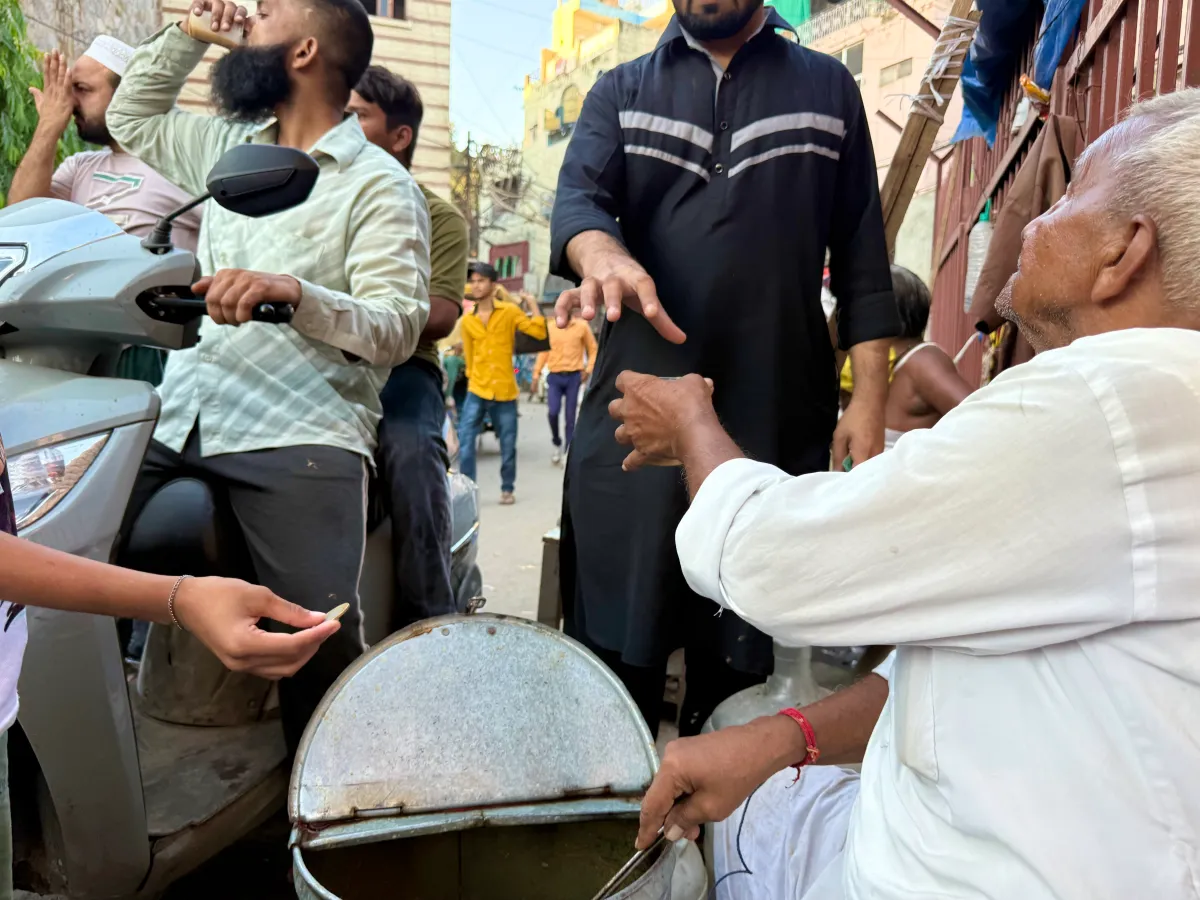By Mayank Austen Soofi,The Delhi Walla
Copyright thedelhiwalla

Drink of the roadside.
[Text and photo by Mayank Austen Soofi]
Abruptly, without any prior notice, he vanished. He wasn’t seen for a whole month. This afternoon, he is again sighted. Vendor Mahinder Singh is sitting at his usual spot on the pave, beside his lidded metal bucket. Where had he disappeared?
Always dressed in white kurta pajama, the eldery man explains that he had gone back to his village. “It was raining very hard in Dilli, and my cold drink never sells well during the rain.” The people then rarely have a craving for his offering, he says. He came back just the day before.
Mahinder Singh’s stall consists of the aforementioned bucket, which is currently half-filled with what he refers to as sattu ghol. This is roasted gram flour mixed with water and sugar. Sattu of course transcends Delhi. A staple in many parts of the country, it is stuffed in parathas, stirred in milk, and also consumed with chawal as a meal in itself. Some people prefer the salted version of sattu ghol in which the drink is spiked with neembu and pudhina patta. The Delhi paves prefer the sugary edition. Mahinder Singh’s sattu stays chilled with chunks of ice, which he acquires from a “baraf” supplier in nearby Phatak Teliyan. The venerable man has been sitting on this spot for forty years, beside the stone walls of the centuries-old Turkman Gate gateway.
Each day, after Mahinder Singh leaves in the evening, and goes back to his one-room quarter in Shastri Park, his spot shows absolutely no trace of his 45-year-old establishment. As if it never were. This is true of hundreds of Delhi’s other long-time establishments that are set up daily on the city roadsides. The men and women behind these stalls operate their businesses while being exposed to extreme temperature and extreme pollution. But the longevity of their service and toil, the lifetime they invest in their work, barely correspond to the makeshift appearance of their establishments.
The agenda to visit Mahinder Singh’s stall becomes more urgent on realising that September is its final month for this year, after which the stall owner shall return to his village in UP. “I don’t serve sattu ghol in winter.” He will return next year, after Holi.
Meanwhile, scores of people are stopping by his stall every other second, hoping that the sattu ghol (10 rupees per glass) would grant them relief from the day’s prickly heat and unbearable humidity. A barefoot man in tattered gown is silently standing behind this crowd of customers. Mahinder Singh hands him a glass.
Just beside the sattu ghol stall is a supari seller’s pavement stall. Panna Lal has been the area’s living landmark for 50 years. This makes his stall older than that of Mahinder Singh’s stall. The friendly gent agrees to share his story.



